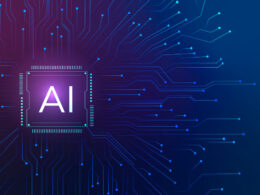The health strategist
institute, portal & consulting
for workforce health & economic prosperity
Joaquim Cardoso MSc.
Servant Leader, Chief Research & Strategy Officer (CRSO),
Editor in Chief and Senior Advisor
January 17, 2024
This executive summary is based on the article “Three Epochs of Artificial Intelligence in Health Care”, published by JAMA Network and written by Michael D. Howell, MD, MPH; Greg S. Corrado, PhD; and Karen B. DeSalvo, MD, MPH, MSc, on January 16, 2024.
What is the message?
Interest in artificial intelligence (AI) has surged in health care, prompting leaders to grapple with deployment decisions and comprehend the associated risks, challenges, and opportunities.
This article presents a framework delineating three distinct epochs of AI—AI 1.0, AI 2.0, and AI 3.0—each characterized by unique capabilities and risks.
The current epoch, AI 3.0, marked by foundation models and generative AI, introduces transformative potential and novel risks, necessitating careful consideration in decision-making.

ONE PAGE SUMMARY
What are the key points?
Evolution of AI in Health Care
While the concept of AI dates back to the 1950s, the capabilities and risks associated with different types of AI vary significantly. The evolution is categorized into three epochs: AI 1.0 involves symbolic AI and probabilistic models; AI 2.0 is marked by deep learning, contributing to advancements in health care; and AI 3.0 signifies the era of foundation models and generative AI.
Distinctive Features of Each Epoch
AI 1.0: Encodes human knowledge into computational rules and employs probabilistic models.
AI 2.0: Introduces deep learning, emphasizing task-specific models primarily focused on classification and prediction.
AI 3.0: Characterized by foundation models and generative AI, offering new capabilities allowing diverse tasks without retraining on new datasets, with potential transformative impact.
Risks and Capabilities of AI 3.0
Transformative Potential: Foundation models and generative AI in AI 3.0 represent a revolutionary leap, promising substantial improvements in health care.
Novel Risks: The article highlights new risks associated with AI 3.0, such as hallucinations. Models can perform various tasks without retraining, responding differently to simple text instructions like prompts for different recipients.
What are the key examples?
The article illustrates the transformative capabilities of AI 3.0 with examples of foundation models and generative AI responding distinctly to different textual prompts, showcasing the potential for diverse applications.
Conclusion
Health care leaders face critical decisions regarding AI adoption, and the framework of AI 1.0, 2.0, and 3.0 serves as a valuable heuristic.
Acknowledging the distinct capabilities and risks of each epoch, particularly the revolutionary potential of AI 3.0, is crucial for informed decision-making.
While omitting nuances, this framework aids decision-makers in navigating the complex landscape of AI in health care, facilitating the maximization of benefits while minimizing potential risks.
To read the original publication, click here.











